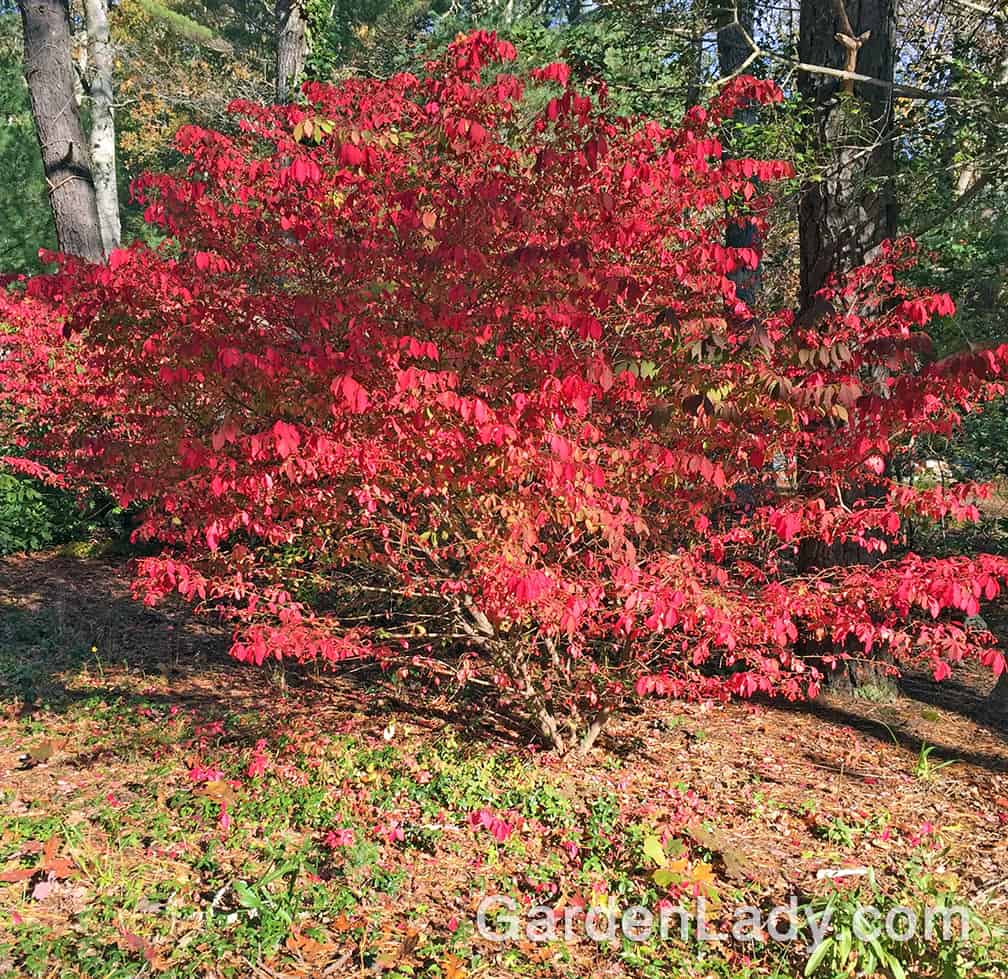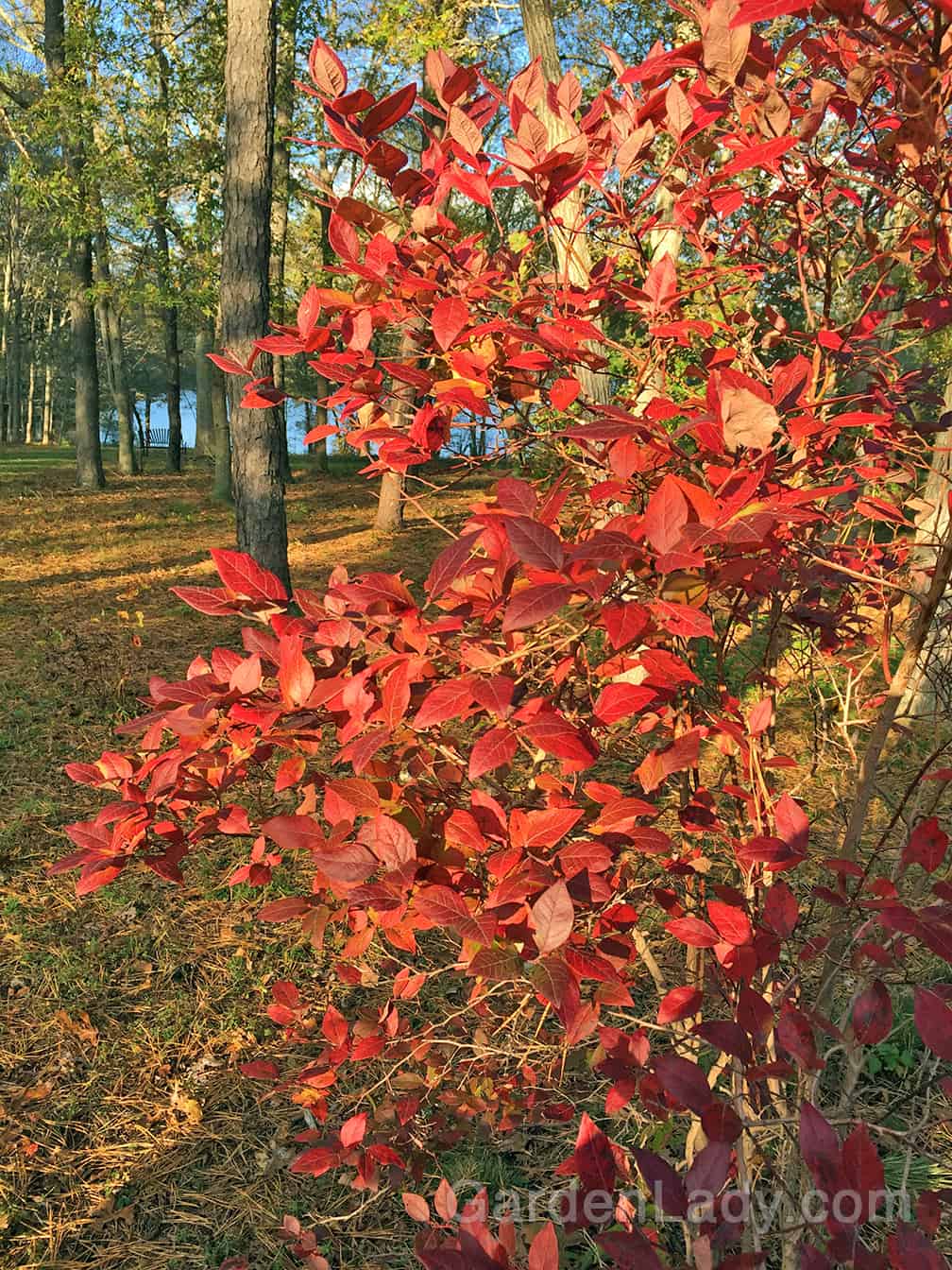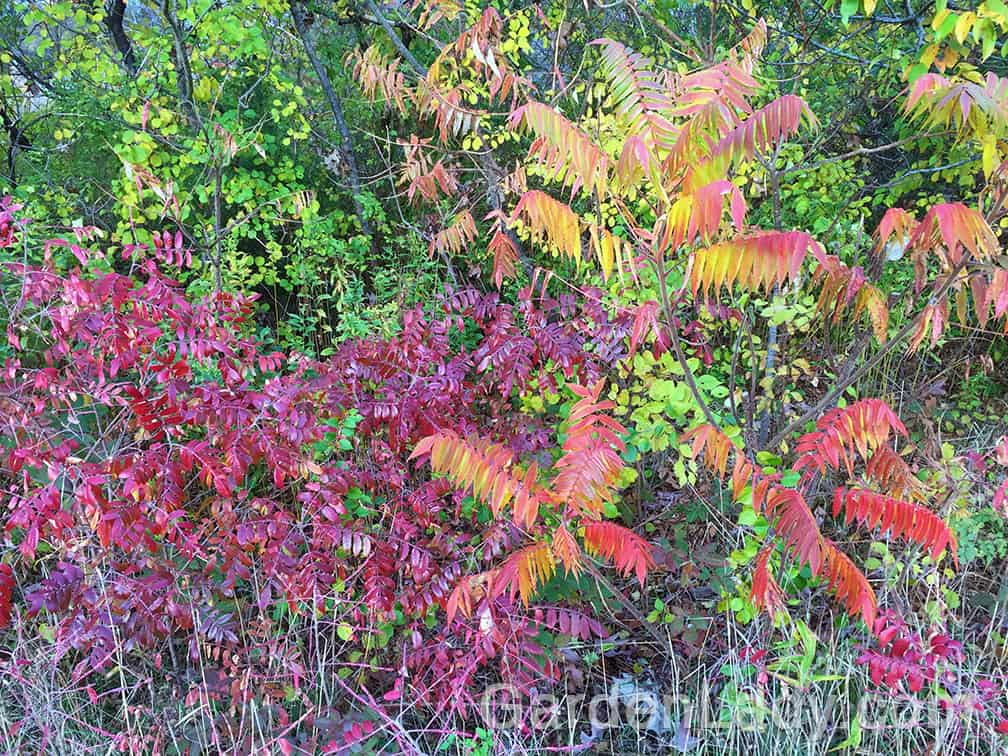I had a caller ask me about burning bush last week. Her husband has been noticing their brilliant red fall color and thought they should plant one in their yard. I explained that this plant was no longer sold in Massachusetts, and with good reason. Then we went on to talk about some of the plants that also have great fall color but aren’t as problematic as Euonymus alatus.
When I got home after the show, I took the dog for a walk in my neighborhood. As we rounded a bend in the road I came across a perfect example of why the burning bush Euonymus has been “banned in Boston.” Photo below. And for those listeners who contacted me later to ask, “What were those fall-color shrubs you were talking about today?” here they are.

Yes, Euonymus alatus turns a lovely red color in the fall. But look closely at the ground in front of this shrub. Those aren’t fallen red leaves you see…those are young Euonymus plants. In this yard there were hundreds of them, around this shrub and elsewhere. The seeds of Euonymus alatus sprout everywhere and this vigorous shrub then proceeds to grow and choke out native plants. Why should you care? Because there is a host of wildlife that depends on those native plants.

Here is a wild high bush blueberry in my backyard. I have found that the wild, species Vaccinium corymbosum have better color than my named cultivars. So it’s good to have both. We cultivate the named varieties for berries for us, and we grow these native shrubs for berries for the birds. (OK…I do sneak a few of the small berries off these plants but frankly, the birds do the same with ours.)

Far more interesting than the one-trick-pony burning bush is this Fothergilla ‘Blue Shadow.’ It has showy spring flowers (burning bush does not), stays under 5 feet tall (ditto) and the array of colors in the fall ranges from blue to purple to red, yellow and orange.

Where there’s smoke there’s fire! I’ll match the color on your burning bush with the leaves of my smoke bush any day. This is Cotinus ‘Grace’ – multi-hued leaves all summer long, smoke-like flowers and in the fall this plant is calling “TA DA!!” for weeks. Give this a renewal pruning every other year to keep it bushy, or let it grow into a multi-stemmed tree. Either way, you win.

Now I know that these aren’t plants that most will want growing in a small yard, but I’m posting this photo of two Sumac varieties to remind you to cherish the native color growing on the roadside. Smooth sumac and staghorn sumac are brilliant in the fall! If you have space, let these natives spread.

0 Comments